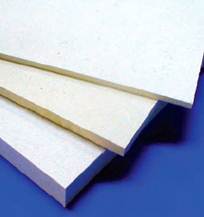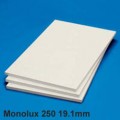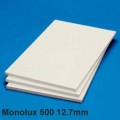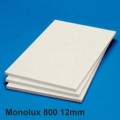Promat Monolux Installation and Decoration Guide
 How to Protect your Walls in a Few Simple Steps
How to Protect your Walls in a Few Simple Steps
One of the common requirements of a building construction is its fire performance. This does not refer only to commercial and public buildings but also residential properties due to the prescribed fire resistance values which are mandatory and more than useful. Namely, using adequate construction materials can make the entire building safer not only in the words of stability and durability but also fire and moisture performance. Depending on the usage and application of the building, what you need is for every component to be able to withstand the typical conditions it is likely to be exposed to. One of the popular construction materials, used not only for increased fire protection but also offering a level of thermal insulation and moisture resistance are Promat Monolux boards, especially designed to withstand high temperatures and extreme conditions which will not degrade nor affect their basic application and functionality.
Promat Monolux boards come in different sizes and dimensions and various temperature ranges (250, 500 and 800° C) why they can be used in a number of different constructions depending on the set requirements. They are made from calcium silicate, reinforced with fibres and fillers, with no inorganic fibres (asbestos or mineral fibres) added in the manufacturing process. They are not only classified as non-combustible, but also offer great impact resistance which can be further on improved with sheet metal veneers, since their surface is suitable for both soft and hard veneers. Another important fact is that the board’s fire resistance remains unaffected by high levels of moisture and humidity, as well as age. Basically, if the boards absorb any moisture causing the loss of strength, it will be fully recovered once the boards are dry. Monolux boards require no special treatments to preserve their moisture tolerance. The same goes for their physical characteristics, due to high dimensional stability, why the boards will not sag or bow when exposed to high levels of moisture. Although Promat Monolux boards offer a level of thermal insulation, it can be upgraded with the use of insulation materials, since the surface can serve as the basis for adding insulation. Finally, the boards have high level of compatibility with most common building materials, and can be applied in a number of fire-resistant constructions, including wall and roof linings, cavity barriers, ventilation ducts, fire door constructions, meter backing boards etc.



Quick Installation and Decoration Guide
Now that you are well aware of some basic properties and advantages, it is time to move on to the Promat Monolux installation and decoration guide.
Prior to the installation instructions, please refer to some additional advice given below:
- make sure that all components are properly dried and conditioned prior to installation, especially when they are used at elevated temperatures;
- in order of enabling adequate thermal movement, all screw and bolt holes need to be properly sized, whereas although standard screws are sufficient, metallic inserts can be used for improved strength;
- in case additional thickness is required, lesser thicknesses can be glued together, but only with adequate adhesives that can withstand high temperatures;
- the boards should be transported and stored in dry conditions.
Installation
Promat Monolux boards should be fixed to a non-combustible background, which could be steel stud or masonry framework, at nominal 300m centres. As upper mentioned, the screw and bolt holes should be a little oversized and the fixings not over-tightened in order of enabling proper thermal movement. However, if the boards are installed directly onto block or brick, make sure to use metal fixings instead of plastic ones. Depending on the application, make sure to use adequate thicknesses and to leave a proper gap (at least 50mm) between the appliances and the boards.
Plastering includes adding a sealing coat of an universal primer, which should be left to dry for approximately 24 hours when the bonding coat should be applied. The primer of at least 5mm thickness should be added to the wet and tacky bonding coat. When choosing a primer, make sure to select only those which are suitable for use in high temperature conditions, so always consult the primer manufacturer in order of assuring that all the components will provide the same level of fire resistance.
Before applying tiles on the boards surface, make sure that Promat Monolux boards are sealed an all sides with adequate adhesive or sealant. Also, the boards should be screwed at a maximum 200mm centres to supports, in both directions. Again, make sure to use tiles that can withstand elevated temperatures.
Monolux Board Decoration
Promat Monolux boards decoration includes the use of a number of different oil and water-based decoration systems, as long as they can sustain high temperatures the construction will be exposed to. Make sure that the coating you choose is in compliance with the Approved Document B requirements in regard to the fire loading contribution and surface spread of flame rate.
Make sure that all surfaces are dry and clean, free of any oil, dust and loose surface layers. Board joints and fixing holes can be filled with adequate joint fillers and the encasement corners reinforced and protected with corner beading, if necessary. When using water-based paints (emulsions, for example), a water downed coat to seal the surface of the Monolux boards should be enough. On the other hand, when using other paints, an undercoat, primer or proprietary sealer may be required, so make sure to consult the paint manufacturer in order of choosing only adequate paints. When adding wallpapers as the decoration, make sure to seal the surface against suction and improve slip, when the vinyl or wallpaper can be hang normally.
For more info about ordering or Monolux fire protection boards specifications contact us on 02080992107 or send us an email at info@insulationshop.co.

















































































































